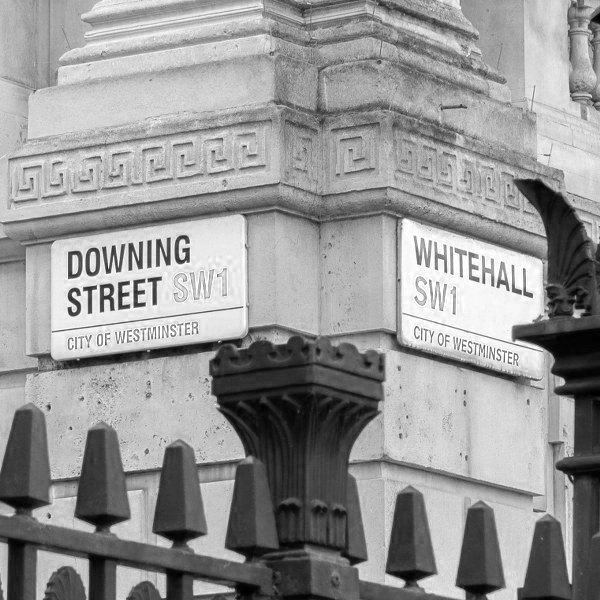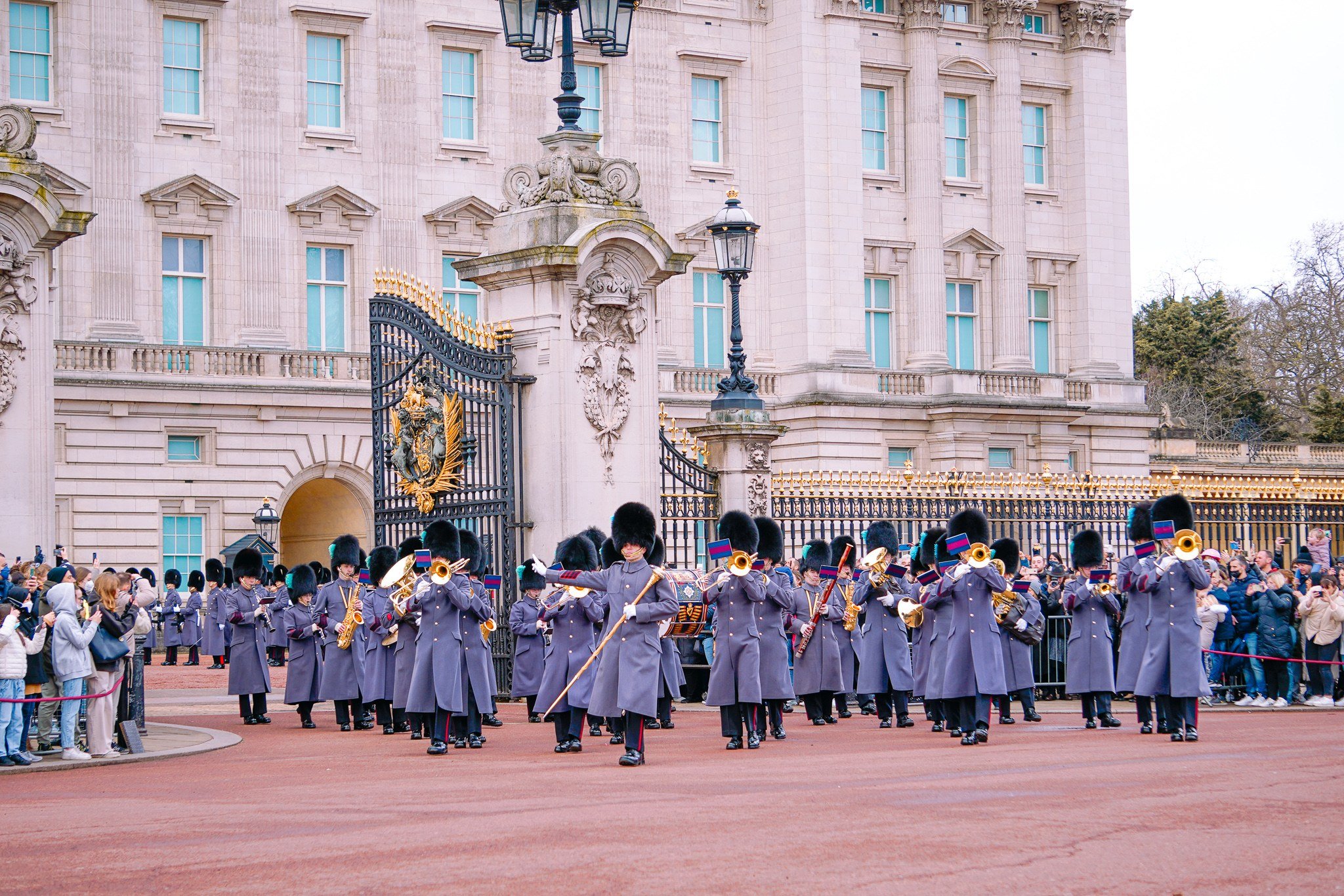What was life in London like during WWII?
Since the beginning of the 20th century, Londoners have been accustomed to explosions.
Still fresh in their memory were WWI and (blowing up) activities of the Militant Suffragette movement (1912-1914) and later of the IRA (Irish Republican Army).
However, none of that could have prepared Londoners for the horror, destruction, and suffering that came after 1939…
“This country is now at war with Germany” - the outbreak of the WWII in London
On the 3rd of September 1939, at 11:15am speaking from 10 Downing Street, Neville Chamberlain (UK Prime Minister) announced a Declaration of War on Germany.
The broadcast took place 15 minutes after the expiration of the British deadline for Germany to withdraw from Poland.
The German invasion of Poland took place two days earlier, on the 1st of September 1939.
The most deadly war in history was about to begin…
An estimated 60,000,000 people died around the world during World War II.
30 ,000 Londoners were killed, and a third of London was turned into dust.
“We shall defend our island. Whatever the cost may be.” W.Churchill
On 10 May 1940, Chamberlain resigned as Prime Minister and soon after that, Winston Churchill took over his job.
In July 1940, after the collapse of France, the Luftwaffe (Germany's air force) began large-scale attacks on strategic targets in Britain.
When failing to gain air superiority over the RAF, they turn to terror bombing civilians in urban areas.
All the major cities in the UK were affected. Night after night, from September 1940 until May 1941. Most air raids happened at night.
Hitler’s intention was to break the morale of the British people so they would pressure their government to surrender.
Surrender was never an option for Churchill.
WWII comes to London - the Blitz
On the 7th of September 1940 (at 5pm), the hell opened above London. German air force came in to attack the UK’s capital.
That night, approximately six hundred German bombs were dropped over east London, with the Docks being the main target at first.
The rest of London was soon to experience a similar fate.
The intense Luftwaffe bombings on London continued for 57 consecutive nights.
From 1941, much of the German air force was focused on the invasion of Russia. However, at the beginning of 1944, the bombs returned.
This time, the so-called Little Blitz was caused mainly by V1 missiles (which flew without a pilot and were crashed by fuel starvation ) and V2 rockets (they were launched from a long distance).
“The King is still in London”
London’s aristocracy left the city for the duration of the war (some even left the country).
However, King George VI bravely decided to stay in the capital.
There was even a popular song recorded in March 1941 celebrating this fact.
“A sentry stands at the palace gate
Though he’s not dressed in red
His eyes are looking everywhere
But he never turns his head
The Royal Standard waves above
For everyone to see
The King is with his people
‘Cos that’s where he wants to be
The King is still in London, In London, in London,
And he would be in London Town
If London Bridge was falling down…”
“Mothers. Send them out of London.” - childless London
The evacuation of children from London began in September 1939, a few days before Britain declared war on Germany.
It was still one year until German air bombs reached London in significant numbers.
However, to mitigate potential aerial bombing damage to children, the government decided to move them (without their parents) to safer places outside the city (to the countryside and small towns).
For a few days, trains were leaving London's stations with children, teachers, and some volunteers helping to implement the evacuation plan.
Apart from some personal belongings, children were carrying with them gas masks and identity cards.
Even if the mass movement of children was voluntary, millions of kids were sent to live with strangers. Most of them did not know when they would be going back home.
This initial evacuation was one of many waves of massive relocation of children from London during WWII.
“Good night and good luck to you all” - the first-ever public speech of Queen Elizabeth II (at the age of 14!)
During the Blitz, Winston Churchill asked the King to task his oldest daughter Elizabeth to do a radio speech on BBC Children’s Hour.
The Children's Hour was a special BBC radio broadcast for kids, usually aired between 5 and 6pm (after school).
The goal was to boost the morale of kids separated from their parents for the second time (the second wave of evacuation during heavy bombing by the Luftwaffe).
The famous broadcast, in which a young princess, among many other things, was urging children to have courage, took place in Windsor Castle on 13 October 1940.
At the beginning of the war young princesses, Elizabeth and Margaret were sent to Windsor Castle, located around 22miles from their usual home, Buckingham Palace.
Buckingham Palace was one of the top targets during the bombings.
This speech was the very first public speech by Queen Elizabeth II.
She was 14 years old at that time.
“Until your eyes used to the darkness. TAKE IT EASY.” -blackout in London
Two days before the Declaration of War on Germany, the UK government introduced regulations imposing a blackout on towns and villages.
All windows and doors needed to be covered at night, and all the street lights were switched off or significantly dimmed.
Special wardens were policing the situation. Penalties were given to those who did not obey the rules.
The blackout was an attempt to make the potential German bombing less efficient.
In London, during the blackout, around 40 people were killed each night by moving vehicles!
London was under state of blackout until April 1945.
“Hitler will send no warnings!” - gas masks
People were encouraged to avoid staying on the streets and carry masks and paper with their names and addresses.
They were masks for kids…
… and for animals.
Sirens announcing the air rides
For the next five years, Londoners would hear these iconic sounds regularly.
Detail guidance was also provided on how people should behave if they hear the sirens announcing the air rides.
“When you take cover, BE COVERED!” - air raid shelters in London
Before the outbreak of war around 1.5 million houses in London had been equipped with an Anderson shelters. They were simply installed in the gardens.
Only a few of them are left in London. Here you can see the examples.
But not everyone had a garden.
For this reason, special steel shelters for flats were designed in March 1941, so-called Morrison Shelters.
If war teaches you anything is to be resourceful.
How to make your own shelter more comfortable was a skill almost every family could place on its "resume" during WWII. Cinema advertisements were coming in handy, and they were surprisingly entertaining too!
The air shelters for dogs
There were also special shelters designed for dogs.
London Underground
The London Underground stayed open and initially was available only for transport purposes.
At first, the government banned Londoners from using it as shelters.
The poshest air raid shelter in London
Many exclusive hotels in London had their own underground shelters.
Park Lane Hotel addvertisments during the WWII. Photo credit: Carl E
Savoy was one of them.
Savoy hotel was (and still is!) an ultra-posh hotel in London, frequently visited by aristocracy and politicians (Winston Churchill himself often visited it too)
Savoy's shelter was very deep and luxurious and available only to its clientele (obviously).
The events that took place there on the 14th of September 1940 played a significant role in reversing the government's decision on (previously denied) access to London Underground during the bombings.
On that day, the group of people from East End stormed the hotel and managed to get to its shelter.
East End was the most affected by WWII and the least prepared for it. There was a significant shortage of good-quality shelters there.
They intended to highlight the inequality of conditions in air raid shelters for the rich and poor.
They managed to spend a night in Savoy’s shelter - once they got in, they could not leave until the “all clear” signal (usually happening at 6 in the morning).
A week later, on the 21st of September 1940, the government allowed the stations of the London Underground to be used at night as air raid shelters.
Bank Station during WWII
The shelters at London Underground did not guarantee safety. At least not always.
On the 11th of January 1941, a German bomb hit the Bank Junction.
The road collapsed, taking the bomb to the platforms of the Bank Underground station located underneath the Bank Junction.
The explosion killed 56 people and injured another 69.
Click this link to see what Bank Junction looked like just after the explosion.
"War's Greatest Picture"
On the 114th night of the Blitz in London (often called the "Second Great Fire of London"), in the early hours of 30 December 1940, photographer Herbert Mason took the most iconic image of the Blitz in London.
The photograph showed St Paul's Cathedral -still standing when surrounded by the smoke of burning buildings around it.
The photograph was taken on the night of very heavy air raids when hundreds of buildings were destroyed and over 160 people were killed.
The photograph (after being published) became an instant symbol of hope for Londoners.
It is all relative…
Interestingly enough Nazi propaganda used the same photo to show proof of "London on its knees" in German newspapers.
The Blitz changed the landscape of London, and many famous landmarks were destroyed or hit.
However, St. Paul's Cathedral became the ultimate symbol of survival during WWII.
No TV and a lot of cinema
Radio and newspapers were the most common sources of information during the war.
Before WWII, there were very few TV sets in London and BBC broadcast stopped completely on 1st September 1939 for the whole duration of the war. It did resume again only in June 1946.
The Government was worried that the strong signal from the transmitter at Alexandra Palace would help enemy aircraft target homes in London.
Cinemas were used instead as the source of visual updates on how the war was going. In between the movies, people were watching short public information films.
Some of the most popular songs during WWII
Crimes in London during WWII
Complete darkness at night, loss of police officers to the forces, and general war-inflicted chaos significantly increased criminal activities in London during WWII.
Gang-related activities, looting, theft, burglary, robbery, prostitution, rape, and murder, were all on the rise.
Those times created characters like first celebrity gangster in London, Billy Hill (also called God Father of London) or a serial killer Gordon Cummins (so called Blackout Ripper).
Blackout Ripper was a member of Royal Air Force! He was executed during the air raid in June 1942 in Wandsworth Prison.
THE END of war - VE Day in London
After almost six years of war, the victory day finally happened on the 8th of May 1945 (the day earlier Germany signed unconditional surrender).
The German War was over, but the war on the Asian front was still very much ongoing. Japan surrendered three months later.
After the official speech, Churchill went to St. Margaret’s Church for a victory thanksgiving service. After that, he joined the Royal Family on the balcony of Buckingham Palace to wave to the big crowd gathered outside the palace.
People celebrated the victory on the streets of London non-stop for two days.
Even the darkness at night (the streets light were still off due to the blackout) did not stop them.
Did you enjoy this post? See also:


















